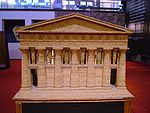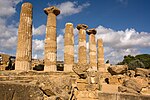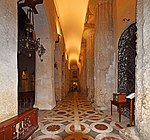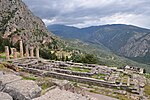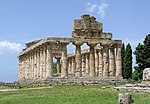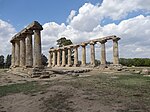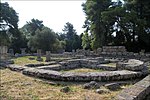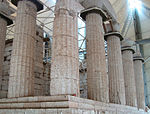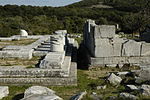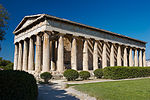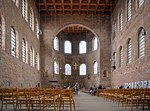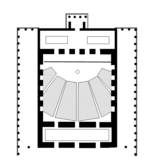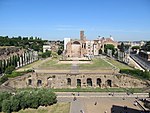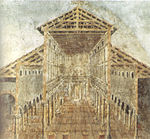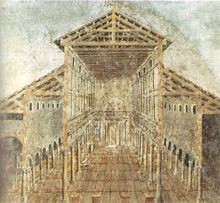
The list of ancient roofs comprises roof constructions from Greek and Roman architecture, ordered by clear span. Roof constructions increased in clear span as Greek and Roman engineering improved. Most buildings in classical Greece were covered by traditional prop-and-lintel constructions, which often required interior colonnades for support. In Sicily, truss roofs are believed to have appeared as early as 550 BC. [1] Their potential was fully realized during the Roman Empire, which saw trussed roofs spanning over 30 meters in width, covering the rectangular spaces of monumental public buildings such as temples, basilicas, and later churches. These spans were three times as large as the widest prop-and-lintel roofs and were only exceeded by the largest Roman domes. [2]
Contents
Almost no original classical roofs survive. The two best known exceptions, both circular or nearly so, are the small stone roof of the Tower of the Winds in Athens (perhaps 1st century BC) and the large Roman concrete roof of the Pantheon, Rome.
